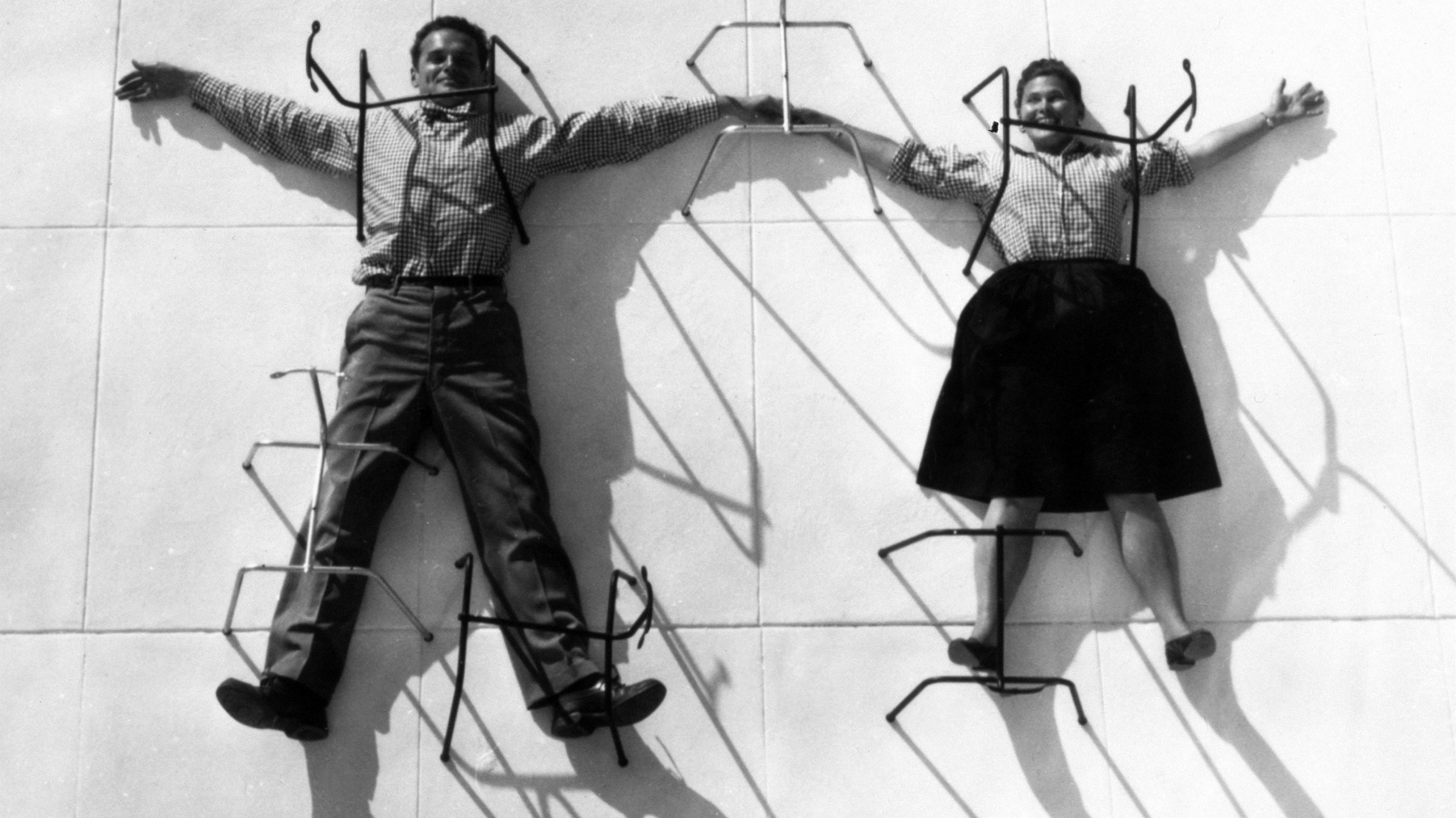When we think of Modern Art, movements like Cubism, Surrealism, and Abstract Expressionism often come to mind. But what about the ones that didn’t receive as much attention? In this article, we’ll explore some of the most overlooked art movements of the modern era — movements that helped shape creative expression but are rarely talked about today.
1. Orphism: A Colorful Offshoot of Cubism
Let’s start with Orphism — a vibrant and colorful movement that emerged from the ideas of Cubism but took abstraction to a whole new level.
Orphism began in France around 1912, led by artists like Robert Delaunay and Sonia Delaunay. It was an offshoot of Cubism, but while Cubism focused on breaking down objects into geometric forms and multiple perspectives, Orphism emphasized color, light, and visual rhythm as its main expressive elements.

Robert Delaunay, Endless Rhythm, 1934.
The name "Orphism" comes from the legendary ancient Greek poet and musician Orpheus. The term was coined by French poet Guillaume Apollinaire, who believed that painting should have a musical quality. This idea of creating visual harmony similar to music was a key influence on the development of abstract art.
What made Orphism unique was its focus on pure color relationships. The artists aimed to create rhythmic and harmonious compositions inspired by the fluidity and energy of music. You'll often see circular shapes and interlocking patterns that evoke a sense of motion and vibrant energy.
Despite its bold vision, Orphism never gained the same recognition as Cubism. Its brief lifespan — along with the outbreak of World War I — led to its decline, and it was eventually overshadowed by other abstract movements. Even so, it played an important role in advancing pure abstraction and showed how color could become a visual language of its own.
2. Vorticism: The Rebellious British Art Movement
While Orphism faded with the onset of war, a new movement was emerging in Britain. Formed in London in 1914, Vorticism aimed to capture the energy and intensity of the modern world.
It was founded by artist and writer Wyndham Lewis, who sought to express the power and chaos of the machine age. The name comes from the idea of a vortex — a swirling force at the center of movement and energy.

David Bomberg (1890-1957), Figure Study (Racehorse), circa 1913.
Vorticism was influenced by both Cubism and Futurism, combining fragmented forms with bold, mechanical energy. Vorticist artists focused on urban and industrial subjects, using a hard-edged, angular style. But unlike the Italian Futurists, who celebrated speed and technology with enthusiasm, the Vorticists took a more critical and detached approach. Lewis rejected Futurism’s emotional tone and instead promoted a visual language that felt raw and aggressive.
The movement had its own magazine, called BLAST. Its bright pink cover and bold typography reflected Vorticism’s rebellious spirit. Inside were manifestos and artworks that celebrated modern life while rejecting traditional British art, such as pastoral landscapes and classical nudes.
Despite its ambition, Vorticism was short-lived. The outbreak of World War I scattered its members and brought the movement to an abrupt end.
Even so, it marked a bold and daring moment in British art, laying the groundwork for modern design and architecture through its industrial aesthetic and geometric clarity.
3. Suprematism: The Russian Movement That Redefined Abstraction
Around the same time in Russia, a different but equally radical movement was taking shape. It was called Suprematism. This movement pushed geometric abstraction even further, stripping away all representational elements in pursuit of pure feeling.
Founded by the artist Kazimir Malevich around 1914, Suprematism aimed to reduce art to its most basic components. It focused on pure geometric forms like squares, circles, and rectangles, often painted in a limited range of colors to emphasize simplicity and clarity.

Kazimir Malevich, Black Square and Red Square, 1915.
Malevich believed that art shouldn’t be about depicting the physical world. Instead, he felt it should express emotion and spiritual experience. For him, the supremacy of feeling was more important than representing objects, people, or landscapes. This radical idea marked a major shift away from traditional artistic values and helped open the door to fully non-objective art.
But Suprematism wasn’t just about painting simple shapes. It was about creating an entirely new kind of art — one that communicated directly through form and color, without any reference to the material world. This revolutionary approach had a lasting impact on later abstract movements and even influenced the development of minimalist art.
However, like many radical art movements of the early 20th century, Suprematism had a short life. After the Russian Revolution, the movement was pushed into the background. Even so, it marked a turning point in art history — proving that art didn’t need to represent reality to convey deep meaning and emotional power.
4. Constructivism: Building a New World Through Art
As Suprematism faded, a new movement emerged in its place. It embraced the revolutionary energy of the time and aimed to put art to practical use. This was Constructivism. While Suprematism focused on spiritual abstraction, Constructivism was rooted in functionality, design, and collective purpose.
Constructivism began in Russia around 1915 and was led by artists like Vladimir Tatlin and Alexander Rodchenko. They believed that art should serve a social function rather than exist purely for decoration. Their goal was to move beyond traditional painting and focus on creating objects and structures that could improve everyday life.

Aleksandr Rodchenko, Non-Objective Painting, 1919.
Vladimir Tatlin, influenced by Picasso’s cubist constructions, began making abstract sculptures using industrial materials like metal and glass. These works reflected the modern, machine-driven world and brought art into the realm of three-dimensional space.
Alexander Rodchenko brought Constructivist ideas into graphic design and photography. His posters and book covers used bold typography, geometric shapes, and dynamic layouts to express the energy of industrial progress and modern life.
Constructivism also extended into architecture, textiles, theater, and fashion. At its core was the belief that art should be integrated into daily life — something designed to be used, not just admired.
Over time, the movement declined as the Soviet government tightened control over the arts. However, Constructivism left a powerful legacy. It helped inspire modern design movements like the Bauhaus and had a lasting impact on architecture, graphic design, and visual culture throughout the 20th century and beyond.
5. Op Art: Optical Illusions on Canvas
Decades later, in a completely different context, artists once again began to explore geometry and visual structure. This time, their focus was on optical illusion and perception — a movement that became known as Op Art.
Short for Optical Art, Op Art emerged in the 1960s as a major development in painting. It used geometric forms to create visual effects that played with how we see. Rather than depicting reality or emotion, Op Art focused on tricking the eye — using patterns that appeared to move, vibrate, or create depth on a flat surface. These effects could range from subtle shifts to disorienting, even dizzying sensations.
The movement reflected a broader postwar interest in perception, science, and psychology, as artists and viewers became fascinated by how the mind processes visual information.

Bridget Riley, Untitled (Circular motion), 1962.
One of the leading figures was Victor Vasarely, often called the grandfather of Op Art. His precisely arranged patterns created strong illusions of motion and space, and he believed in making art accessible to all.
Another prominent artist was Bridget Riley, known for her striking black-and-white works such as Movement in Squares and Fall. Her paintings became icons of the style, evoking a powerful sense of movement from static forms.
Op Art relied on repeated shapes, bold contrasts, and mathematical precision. Rather than telling stories or representing the physical world, it invited viewers to engage through pure visual perception.
The movement gained international attention after The Responsive Eye exhibition at the Museum of Modern Art in 1965. The show introduced Op Art to a wide audience and turned it into a cultural phenomenon.
Although Op Art’s popularity peaked in the 1960s, it left a lasting mark on design, fashion, and advertising. Its influence continues to shape digital art and visual effects today.
6. Kinetic Art: When Art Learned to Move
While Op Art created the illusion of movement, some artists took it a step further by introducing actual motion into their work. This led to Kinetic Art — a movement where movement itself became a central part of the artwork.
The word “kinetic” means relating to motion. Since the early twentieth century, artists have used movement to explore concepts like time, technology, and perception. In Kinetic Art, motion could be generated mechanically, powered by natural forces, or triggered by the viewer.

Naum Gabo, Artwork Caption Kinetic Construction (Standing Wave), 1919-1920.
Early experiments came from artists like Marcel Duchamp, but it was Alexander Calder who truly brought Kinetic Art into the spotlight. His iconic mobiles are delicate, balanced structures that shift with the air, transforming sculpture into something dynamic and ever-changing. As they move gently and unpredictably, they create constantly shifting patterns of form and shadow.
Kinetic Art was revolutionary because it challenged the idea of art as something fixed and untouchable. It invited participation. It asked the viewer to engage — to move around it, or even to activate it. In doing so, it blurred the boundary between art and science, and between object and experience.
The idea of art that moves and evolves continues to inspire creators today. Kinetic Art reminds us that art doesn’t have to stand still — it can be alive, dynamic, interactive, and constantly changing, just like the world around us.
Read More Art Articles:
• 8 Major Modern Art Movements You Need to Know
• Surrealism in Art: From the Unconscious Dream to Artistic Reality
• Montage in Art: Definition, Photomontage, and Artists
• Bauhaus Movement: How It Revolutionized Art and Design
About Us
Dans Le Gris is a brand that began with everyday jewelry, with each handmade piece designed and crafted in Taiwan. We deeply value every detail, dedicating ourselves to creating timeless pieces through collaboration with experienced craftsmen.
In our journal, we provide irregular updates featuring articles about art, culture, and design. Our curated content encompasses diverse aspects of life, with the aspiration to offer meaningful insights and inspiration.






